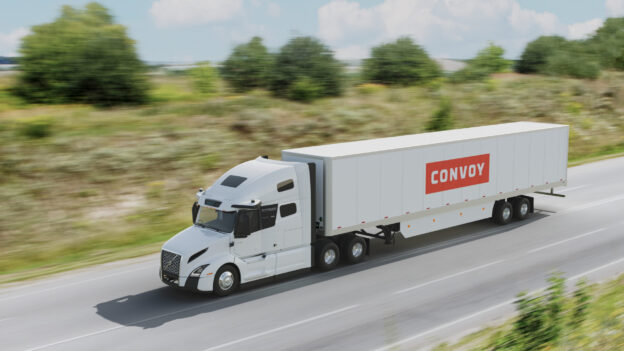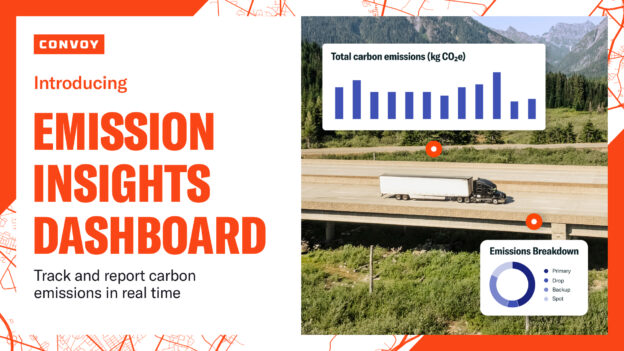How Eco Transportation Supports Clean Communities
Sustainability • Published on August 18, 2020
If you hear the words “air pollution”, what image comes to mind? A smoggy city? Exhaust from a car or truck’s tailpipe? It can be easy to think of air pollution in terms of where it comes from and how it impacts the atmosphere. But let’s consider who is impacted by air pollution and how the transportation industry can support clean communities.

The impacts of air pollution and communities
While every person is negatively impacted by air pollution, the effects are not equitable. In the US, there are more than 45 million people living within 300 feet of a major transportation facility or infrastructure (Source). CDC research shows that most populations that live near freeways and transportation hubs are made up of minority and low-income communities (Source). A freeway or port might not be the ideal neighbor, but the locations often provide low-income housing that could be lacking elsewhere. Additionally, communities may have taken root in these locations as a result of historial racial segregation.
As a result of living near transportation hubs and highways, these communities are disproportionately affected by air pollution. A study published in the American Journal of Public Health indicated that in areas with high levels of air pollution, those in poverty had a 1.35 times higher burden of disease caused by pollution than the overall population, and Black people specifically had a 1.54 times higher burden than the overall population (Source). This video from a study conducted at the University of Washington (2 minute watch) highlights further research that supports these findings.
The impacts of air pollution and COVID
Effects of air pollution are well-documented and include: asthma, cardiovascular disease, lung cancer, developmental damage in babies and children, and more (Source). In our current times, these same communities are now also seeing increased COVID-19 deaths. According to this New York Times article, areas with high levels of air pollution are associated with higher death rates from COVID-19.
Investing in eco-transport to support clean communities
The transportation industry has a strong role to play in supporting clean communities. In the US, transportation generates the largest share of greenhouse gas emissions (28%) (Source). Within the transportation sector, medium and heavy duty trucks make up 23% of emissions (Source). In urban areas, the share of greenhouse gas emissions from traffic can increase up to 50%. By reducing the carbon emissions from transportation, we can impact not only the bottom line but also people in communities across the country.
Ecological transport, or eco transport, includes vehicles and practices that produce less harmful impacts to the environment compared to other traditional vehicles. In trucking, we recognize the most benefits when businesses, brokers, and truck drivers work together to build eco-friendly practices. So, depending on what role in the supply chain you participate in, how can you contribute?
How businesses can clean up their transportation
Did you know that over half of Convoy customers have sustainability initiatives? More and more, companies are recognizing the savings that sustainable practices can generate. But by implementing these changes they’re also reducing air pollution and benefiting their communities. Some key initiatives for shippers include:
- Focusing on filling trailers and increasing utilization to reduce miles, as highlighted in this Walmart article
- Reducing idle time at facilities
- Investing in electric trucks, like Anheuser Busch
- Develop a sustainability plan. Tools like the SmartWay Shipper Partner program can be a helpful place to start, especially to start gathering data and tracking metrics
How truck drivers can clean up their emissions
Similar to how shippers recognize savings when implementing sustainability measures, truck drivers also see a win-win for their businesses. Reducing emissions means better fuel efficiency and lower gas costs but also cleaner air for the community and themselves! Other tips for reducing emissions and contributing to clean air in the community include:
- Reduce idling time
- Reduce aerodynamic drag. Per Frieghtliner, every 2% reduction in drag results in a 1% increase in fuel economy. Source
- Maintain slower speeds
- Update tires to reduce rolling resistance. Get your Goodyear discount here
- Become a Smartway partner to track your progress
In closing, it can be easy to think of air pollution at a high level but it’s important to focus on how our communities and neighbors are impacted, especially those facing above-average levels of pollution. The transportation industry provides many opportunities for all of us, from businesses to truck drivers to brokers, to take steps to reduce transportation air pollution and help support clean communities. What steps can you take today?
Convoy’s commitment to sustainability
Our commitment to sustainability is core to our mission of “transporting the world with endless capacity and zero waste.” We are proud to have saved 2.4 million pounds of carbon emissions through our programs and technology. Some examples of programs include:
- Batch shipments – reducing empty miles
- Reducing wait times with appointment windows
- SmartWay partner
- Partnering with our customer to help them meet sustainability goals. Video: Waiakea Springs



